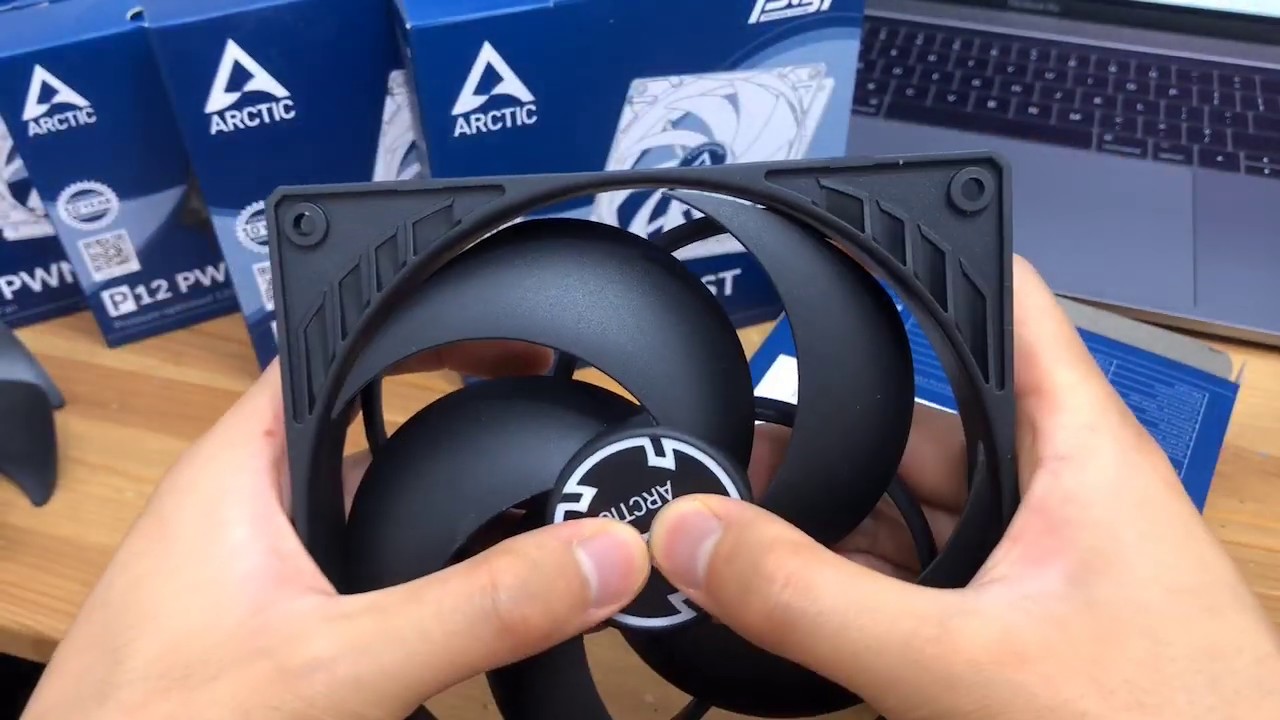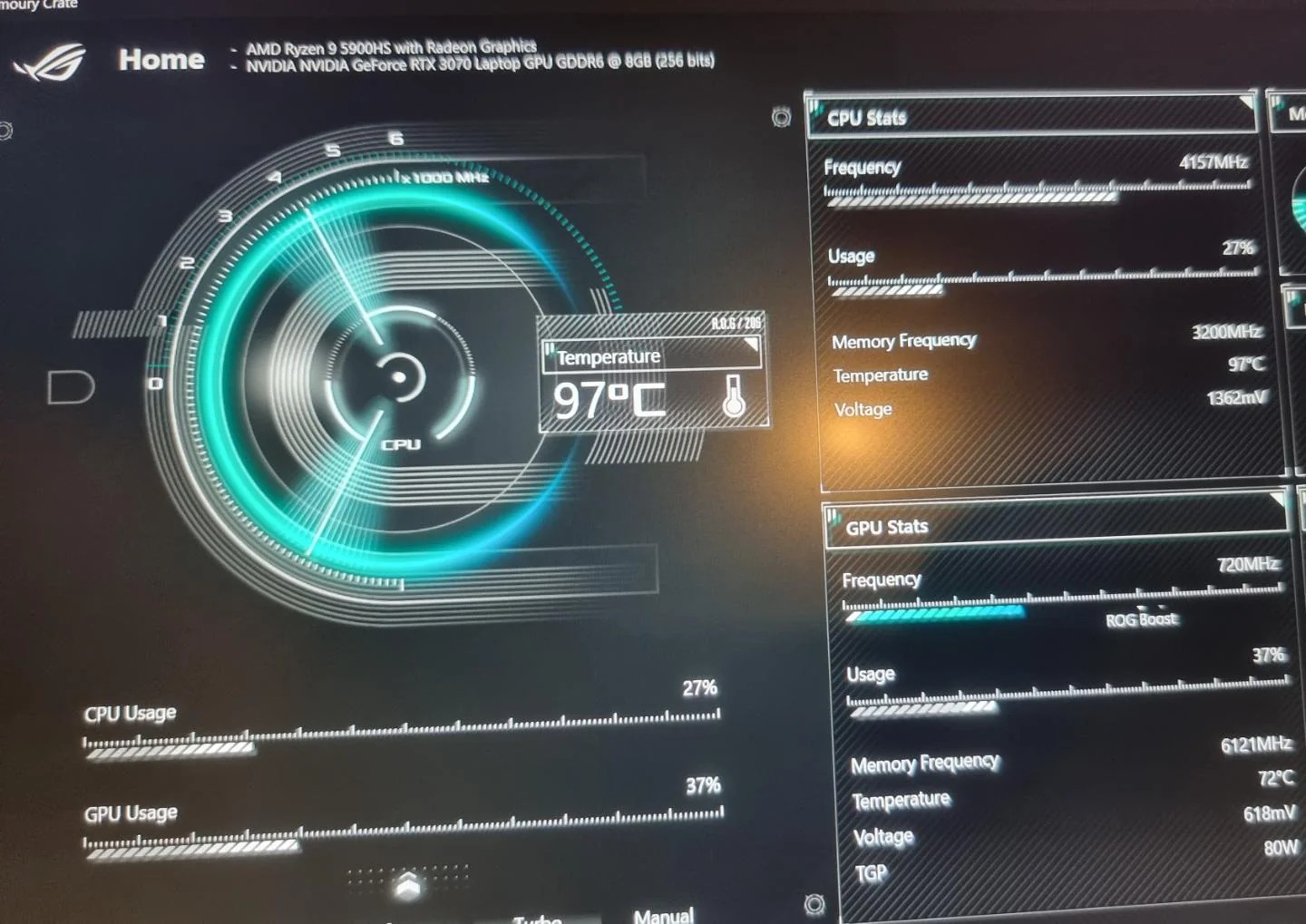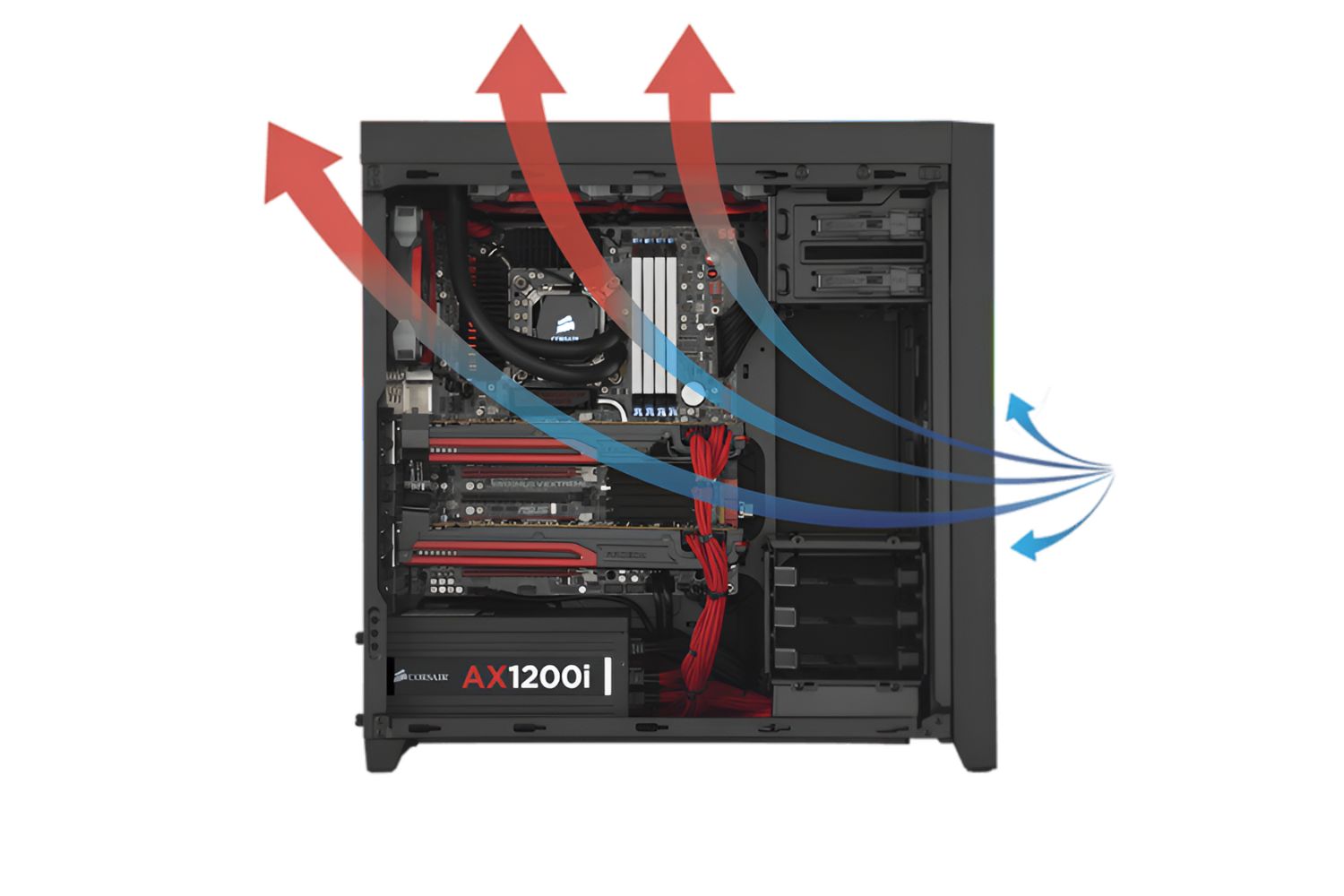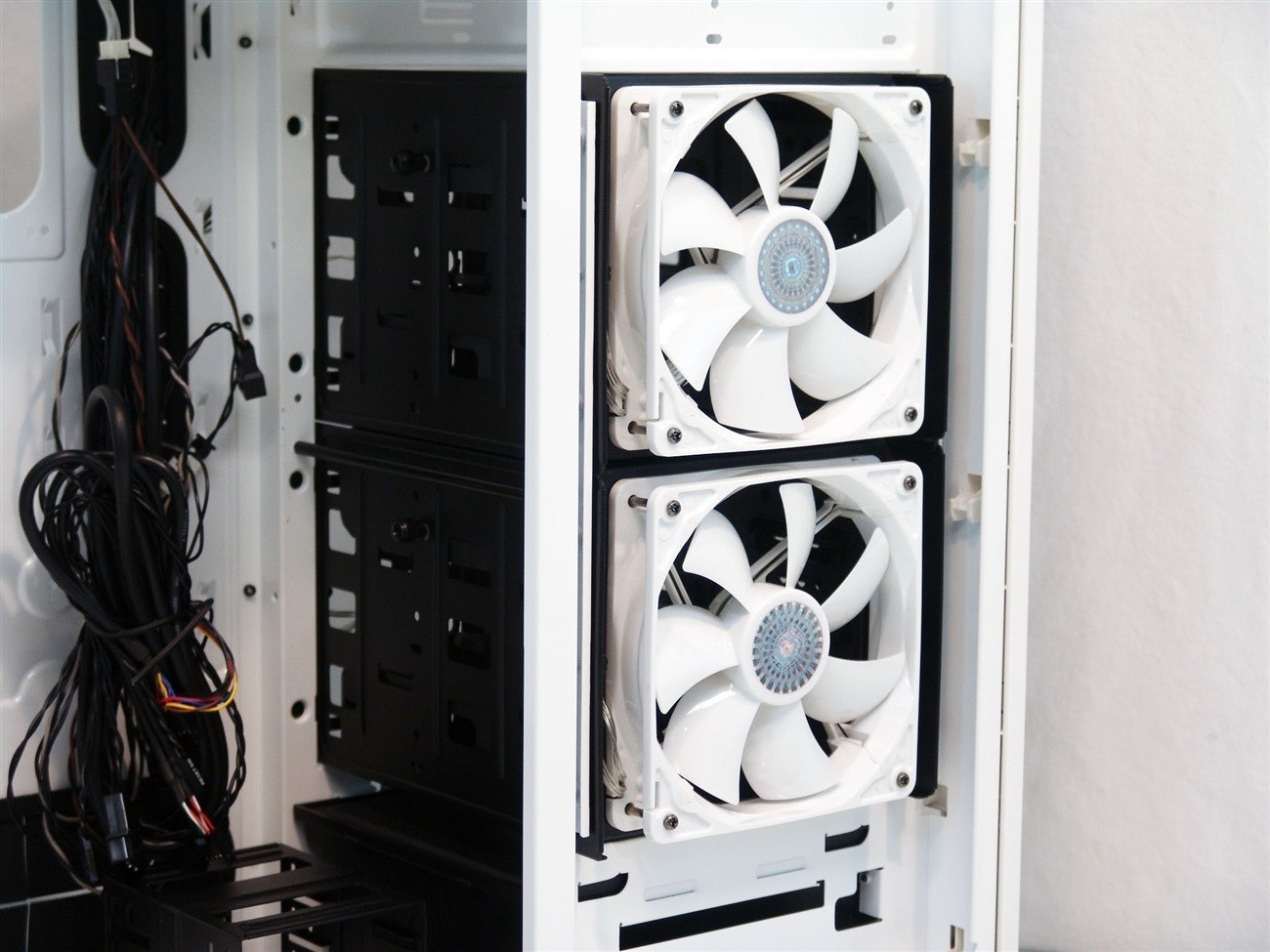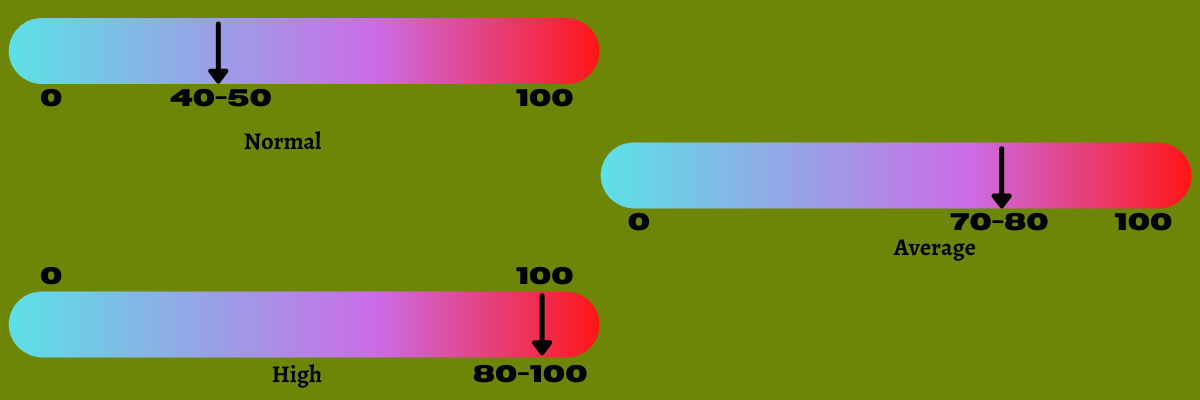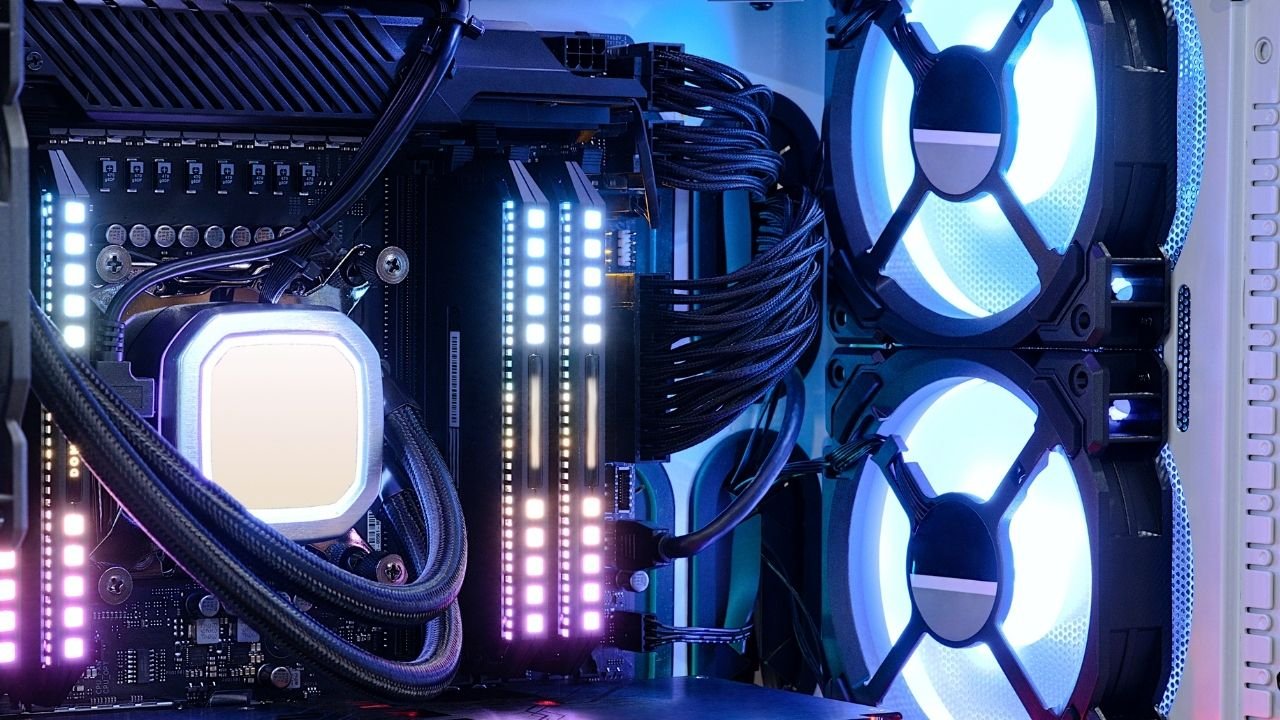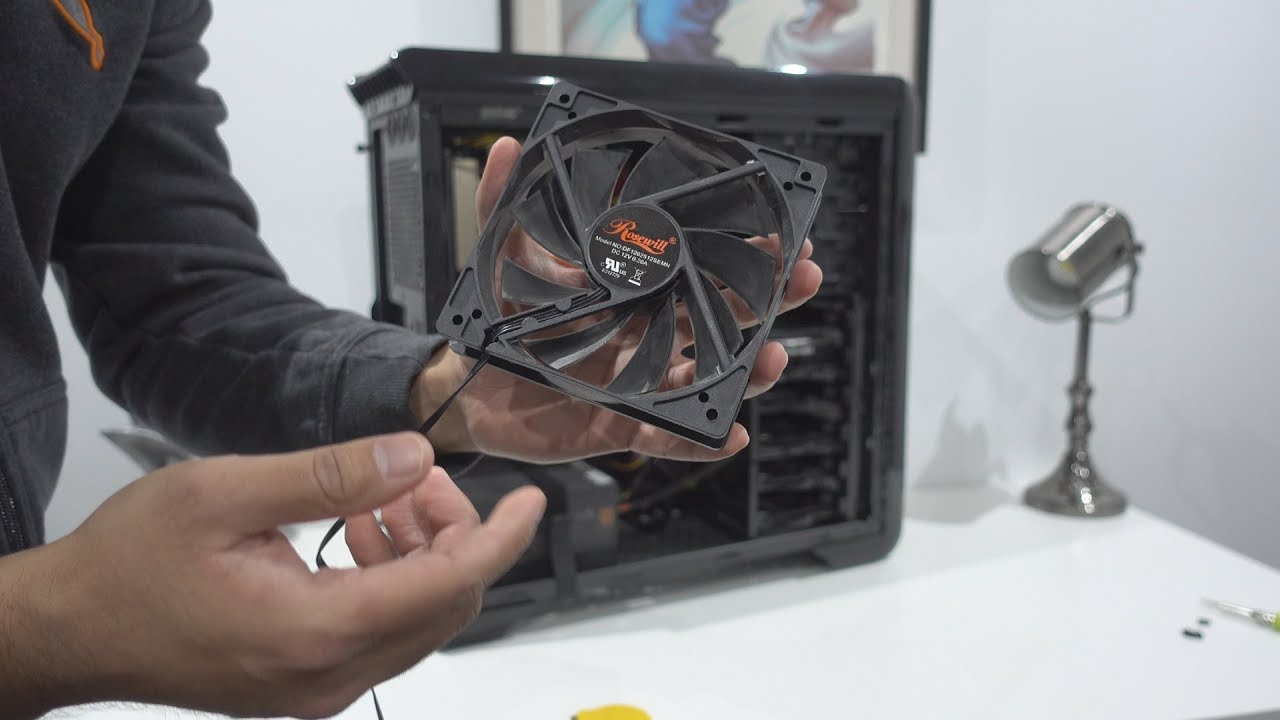Introduction
When it comes to keeping your computer running smoothly, one crucial factor often overlooked is the temperature of the central processing unit (CPU). The CPU is the brain of your computer, responsible for executing tasks and calculations. Like any electronic component, it generates heat during operation, and it is important to ensure that the CPU temperature is within a safe range.
CPU temperature refers to the heat generated by the CPU while it is functioning. This heat can affect the performance, lifespan, and reliability of your computer. Therefore, understanding and managing the CPU temperature is vital for maintaining optimal system functionality.
Why is CPU temperature important? Well, the CPU consists of microscopic transistors that switch on and off at high speeds, generating heat as a byproduct. If the CPU becomes too hot, it can lead to a variety of issues, including system instability, reduced performance, and even permanent damage to the CPU itself.
Several factors can affect CPU temperature, such as the design and efficiency of the cooling system, the intensity of the tasks being performed, and the overclocking of the CPU. Each CPU has a specific temperature range within which it functions optimally. Monitoring and keeping the CPU temperature within this range is vital to ensure reliability and prevent potential damage.
In this article, we will explore the ideal CPU temperature range, the consequences of high and low CPU temperatures, how to check CPU temperature, and provide tips on how to keep your CPU temperature in check. By following these guidelines, you can ensure the longevity and efficient operation of your computer.
What is CPU Temperature?
CPU temperature refers to the measurement of how hot or cool the central processing unit (CPU) of your computer is while it is in operation. The CPU is the brain of the computer, responsible for executing instructions and performing calculations. As it carries out these tasks, the CPU generates heat as a natural byproduct.
CPU temperature is measured in degrees Celsius (°C) or Fahrenheit (°F) and is an essential metric to monitor to ensure the proper functioning of your computer. Understanding the CPU temperature allows you to assess whether the heat generated is within safe limits and take necessary measures to maintain optimal performance.
The CPU temperature is influenced by various factors, such as the workload being placed on the CPU, the efficiency of the cooling system, and the environmental conditions in which the computer operates. During intensive tasks or overclocking, where the CPU is pushed to its limits, the heat generated increases.
CPU temperature is typically monitored using software tools that can access the built-in thermal sensors on the CPU. These sensors measure the temperature at various points on the CPU, such as the core or the integrated heat spreader. The information collected by these sensors is then displayed in real-time, allowing users to monitor CPU temperature and take appropriate actions if it exceeds safe thresholds.
It is important to note that not all CPUs have the same temperature ranges. Different CPU models and manufacturers specify their own recommended temperature ranges for optimal performance and longevity. These temperature ranges can vary based on factors such as power consumption, architecture, and manufacturing process.
By regularly monitoring your CPU temperature, you can identify potential overheating issues early on and take steps to prevent damage to your system. Overheating can lead to system instability, crashes, and even permanent damage to the CPU. Therefore, understanding and managing CPU temperature is vital for the overall health and longevity of your computer.
Why is CPU Temperature Important?
The temperature of the central processing unit (CPU) is a critical factor to consider when it comes to the overall health and performance of your computer. Managing CPU temperature is important for several key reasons:
- Reliability: Excessive heat can have a detrimental impact on the lifespan and reliability of your CPU. Over time, prolonged exposure to high temperatures can cause thermal degradation, leading to reduced performance and potentially permanent damage.
- System Stability: When the CPU temperature goes beyond its safe operating limits, it can result in system instability. This can manifest as random crashes, freezes, or unexpected shutdowns, disrupting your work or causing you to lose unsaved data.
- Performance: High CPU temperatures can cause the CPU to throttle, meaning it will automatically reduce its speed to cool down. This throttling can significantly impact system performance, leading to slower processing speeds and decreased overall efficiency.
- Longevity: By keeping your CPU temperature within the recommended range, you can extend the lifespan of your CPU. This is particularly important if you plan to use your computer for years to come, as cooler temperatures help prevent premature wear and tear on the CPU.
- Overclocking: Overclocking, the process of running a CPU at higher speeds than its rated specifications, can lead to increased heat generation. Ensuring that the CPU temperature remains within acceptable limits is crucial for safely and effectively overclocking your CPU.
By actively monitoring and managing CPU temperature, you can mitigate these risks and ensure the smooth and reliable operation of your computer. This can be particularly important for users who engage in demanding tasks such as gaming, video editing, or running resource-intensive software.
It is worth noting that while high CPU temperatures are a major concern, excessively low temperatures can also have adverse effects. Intense cooling solutions that bring the CPU temperature too low can cause condensation, leading to potential hardware damage. Therefore, striking a balance and maintaining the CPU temperature within the specified range is crucial for optimal performance and longevity.
Now that we understand the importance of CPU temperature, the next section will delve into the various factors that can influence it.
Factors Affecting CPU Temperature
The temperature of the central processing unit (CPU) can be influenced by a variety of factors. Understanding these factors can help you identify potential sources of heat and take appropriate measures to manage and control CPU temperature. Here are some key factors that can affect CPU temperature:
- CPU Load: The amount of work the CPU is performing plays a significant role in generating heat. When the CPU is handling intensive tasks like gaming or video rendering, it generates more heat compared to lighter tasks like web browsing or document editing.
- Clock Speed and Overclocking: The clock speed of the CPU, measured in gigahertz (GHz), determines how fast the CPU can process instructions. Higher clock speeds generally lead to increased heat generation. Additionally, if you overclock your CPU, i.e., run it at speeds higher than its rated specifications, it can result in higher temperatures.
- CPU Architecture: The architecture of the CPU can affect its heat generation. Different CPU microarchitectures have varying levels of efficiency, which can impact temperature. Newer CPU architectures often have better power management features and thermal designs to reduce heat output.
- Cooling System: The efficiency of your computer’s cooling system is critical for maintaining optimal CPU temperature. The cooling system consists of components such as fans, heat sinks, and thermal paste. A well-designed and properly functioning cooling system helps dissipate heat efficiently, preventing temperature spikes.
- Ambient Temperature and Airflow: The temperature of the room where your computer is located can affect CPU temperature. If the ambient temperature is high, it can lead to more heat accumulation. Additionally, sufficient airflow within the computer case is essential for removing hot air and bringing in cooler air to cool the CPU.
- Dust and Dirt: Accumulation of dust and dirt on components, especially on the cooling system, can impede airflow and hinder heat dissipation. Regular cleaning and maintenance of your computer can help prevent excessive heat buildup caused by dust and dirt.
Understanding these factors can help you make informed decisions to manage CPU temperature effectively. Monitoring CPU temperature using software tools can provide you with real-time feedback on the impact of these factors and aid in identifying potential overheating issues.
In the next section, we will explore the ideal range of CPU temperatures for optimum performance and discuss the consequences of high CPU temperatures.
Ideal CPU Temperature Range
Every central processing unit (CPU) has an ideal temperature range within which it operates optimally. This range is determined by the manufacturer and is based on factors such as the CPU’s design, architecture, and power consumption. It is important to keep your CPU temperature within this recommended range to ensure optimal performance and longevity.
The ideal CPU temperature range generally falls between 30°C to 60°C (86°F to 140°F), although specific temperature ranges can vary depending on the model and manufacturer. Modern CPUs are designed to handle higher temperatures without immediate damage, but sustained operation near the upper limit of the recommended range can still impact performance and longevity.
It is worth noting that during heavy workloads, such as gaming or video editing, CPU temperatures may temporarily rise above the ideal range. This is considered normal as long as the temperature quickly returns to a safe level once the workload decreases.
When monitoring CPU temperature, it is essential to monitor the temperature of individual CPU cores rather than relying solely on the overall CPU temperature. This allows for more accurate assessment of heat distribution and identification of any potential hotspots.
Keep in mind that the ideal temperature range may vary for different CPU models, so it is crucial to refer to the manufacturer’s specifications or manual for the specific temperature guidelines for your CPU. Exceeding the recommended temperature range may result in reduced performance, increased risk of system instability or crashes, and potential long-term damage to the CPU.
Now that we understand the ideal temperature range for CPUs, let’s explore the consequences of high CPU temperatures and why it is crucial to keep your CPU temperature in check.
Consequences of High CPU Temperature
Maintaining a safe operating temperature for your central processing unit (CPU) is crucial for the overall health and performance of your computer. When the CPU temperature exceeds the recommended range, several consequences can arise:
- Reduced Performance: High CPU temperatures can cause the CPU to throttle, automatically reducing its clock speed to cool down. This throttling can result in decreased performance, leading to slower processing speeds and sluggish system response.
- System Instability: Overheating can cause system instability, leading to random crashes, freezes, or unexpected shutdowns. These issues can disrupt your work, cause data loss, and impact your overall computing experience.
- Permanent Damage: Prolonged exposure to high temperatures can lead to permanent damage to the CPU. Excessive heat can cause thermal degradation of sensitive components, reducing their functionality or rendering them completely inoperable.
- Shortened Lifespan: Continuous operation at high temperatures can accelerate the aging process of the CPU. This can significantly impact the lifespan of your CPU, leading to a shorter overall lifespan and the need for premature replacement.
- Increased Energy Consumption: High CPU temperatures can also result in increased energy consumption as the cooling system works harder to dissipate the heat. This can lead to higher electricity bills and contribute to the overall environmental impact of your computing activities.
- Component Damage: In addition to the CPU, high temperatures can also affect other components of your computer, such as the motherboard, memory modules, and graphics card. These components may become more susceptible to failure or permanent damage when exposed to excessive heat.
It is important to note that the severity of these consequences may vary depending on the duration and extent of high CPU temperatures. Therefore, it is crucial to address overheating issues promptly to mitigate potential damage.
Monitoring your CPU temperature regularly, maintaining proper airflow within your computer case, using quality cooling solutions, and avoiding overclocking beyond safe limits are some of the measures you can take to prevent high CPU temperatures and minimize the associated risks.
Next, let’s explore the consequences of low CPU temperatures and why it is equally important to avoid excessively low temperatures for your CPU.
Consequences of Low CPU Temperature
While high CPU temperatures can cause significant issues, excessively low CPU temperatures can also have adverse effects on the overall performance and health of your computer. It is important to maintain a balanced and optimal operating temperature for your central processing unit (CPU). Here are some consequences of low CPU temperatures:
- Decreased Performance: Extreme cold temperatures can cause the CPU to become sluggish and operate at lower speeds. This can result in slower processing times and reduced overall performance of your computer, especially when engaging in resource-intensive tasks.
- Potential Condensation: Extremely low temperatures can lead to condensation forming on the CPU and surrounding components. This moisture can cause corrosion, short circuits, and potential damage to sensitive electronic components, leading to system malfunctions or failures.
- Thermal Cycling: Frequent temperature fluctuations, particularly when transitioning between high and low temperatures, can cause stress on the CPU and its thermal interface materials. This thermal cycling can lead to the degradation of these materials, resulting in reduced efficiency and potential long-term damage.
- Unreliable Operation: CPUs are designed to operate within specific temperature ranges. When the CPU temperature is too low, it may not function reliably, resulting in system instability, crashes, or unexpected shutdowns. This can have a negative impact on your productivity and overall computing experience.
- Increased Energy Consumption: In an attempt to compensate for low temperatures, the cooling system may overwork, consuming excess energy. This can increase electricity consumption, leading to higher energy bills and a less environmentally friendly computing setup.
- Reduced Lifespan: Consistently exposing the CPU to extremely low temperatures can accelerate the wear and tear of internal components, ultimately shortening the overall lifespan of the CPU. Premature failure or the need for replacement can result from prolonged operation under such conditions.
It is important to strike a balance and maintain a moderate and optimal temperature range for your CPU. Avoiding extremely low temperatures and ensuring proper thermal management can help maintain stability, performance, and longevity for your computer.
In the next section, we will discuss methods to check and monitor your CPU temperature to ensure it remains within the recommended range.
How to Check CPU Temperature
Monitoring your CPU temperature is essential to ensure that it remains within the recommended operating range and to identify any potential overheating issues. There are several methods available to check your CPU temperature:
- BIOS or UEFI: Many computer systems allow you to monitor CPU temperature directly from the BIOS (Basic Input/Output System) or UEFI (Unified Extensible Firmware Interface). By accessing the BIOS or UEFI settings during startup, you can usually find a section that displays CPU temperature readings.
- Software Monitoring Tools: Various software applications are available that allow you to monitor CPU temperature. These tools usually provide real-time temperature readings and additional features such as graphing, logging, and notifications. Popular software includes HWMonitor, Core Temp, and Open Hardware Monitor.
- Operating System Utilities: Some operating systems include built-in utilities for monitoring hardware, including CPU temperature. For example, Windows users can use Task Manager or third-party software like HWiNFO, while Linux users can rely on system monitoring tools such as lm-sensors or Psensor.
- Manufacturer’s Software: Some CPU manufacturers provide their own software for monitoring temperature and other CPU-specific parameters. These tools often come bundled with drivers or can be downloaded from the manufacturer’s website. Examples include Intel Extreme Tuning Utility (XTU) and AMD Ryzen Master.
- Hardware Monitors: In some cases, you may have a dedicated hardware monitor or fan controller that provides real-time temperature readings. These devices can be installed internally in your computer case or connected externally via USB.
Once you have chosen a method to check your CPU temperature, it is important to keep in mind that different CPUs have different safe operating temperature ranges. Ensure that your CPU temperature readings remain within the specified limits for optimal performance and longevity.
Regularly monitoring your CPU temperature and comparing it to the recommended range can help you identify potential issues, take necessary actions to mitigate overheating, and maintain the health and performance of your computer.
Next, we will explore some tips and best practices for effectively managing and controlling your CPU temperature.
Tips to Keep CPU Temperature in Check
Managing and controlling your CPU temperature is crucial for maintaining optimal performance and prolonging the lifespan of your computer. Here are some tips and best practices to help you keep your CPU temperature in check:
- Ensure Proper Ventilation: Ensure that your computer has proper ventilation to facilitate the flow of cool air and the expulsion of hot air. Keep the vents clean and unobstructed to maintain optimal airflow within the system.
- Use Quality Cooling Solutions: Invest in quality cooling solutions such as CPU coolers, heat sinks, and case fans. Opt for those specifically designed for the CPU and the airflow needs of your computer. Consider aftermarket CPU coolers if you engage in demanding tasks that generate significant heat.
- Apply Thermal Paste Correctly: When installing or replacing the CPU cooler, make sure to apply a thin layer of high-quality thermal paste between the CPU and the heatsink. This improves heat transfer between the CPU and the cooler, enhancing cooling efficiency.
- Keep the Computer Dust-Free: Regularly clean your computer to remove dust and debris that can accumulate on the cooling components. Dust can hinder heat dissipation and decrease cooling efficiency, leading to higher CPU temperatures.
- Avoid Overclocking Beyond Safe Limits: Overclocking increases CPU temperature by pushing it beyond its designed limits. If you choose to overclock, ensure that you have sufficient cooling and monitor temperature closely to prevent overheating.
- Monitor and Adjust CPU Fan Speeds: Check your system’s BIOS settings or use software tools to monitor and adjust the fan speeds. Increasing fan speeds can help dissipate heat more effectively, but be mindful of noise levels and consider a balance that best suits your needs.
- Pay Attention to Ambient Temperature: Ensure that your computer is located in an environment with a moderate ambient temperature. High room temperatures can increase CPU temperature, putting additional stress on the cooling system.
- Optimize Power Settings: Adjust your computer’s power settings to balance performance and power consumption. Setting the CPU to operate at a lower maximum state can help reduce heat generation during lighter tasks and improve overall temperature management.
- Consider Installing Additional Case Fans: If you find that your computer’s cooling system is struggling, consider adding additional case fans to improve airflow. Properly positioned intake and exhaust fans can help create a more efficient cooling setup.
By implementing these tips and practices, you can effectively manage and control your CPU temperature, ensuring the longevity and optimal performance of your computer.
In the next section, we will summarize the key points discussed in this article and emphasize the importance of maintaining an appropriate CPU temperature for your system.
Conclusion
Maintaining an appropriate CPU temperature is vital for the overall health, performance, and longevity of your computer. High CPU temperatures can lead to reduced performance, system instability, permanent damage, and a shortened lifespan. On the other hand, excessively low temperatures can also have detrimental effects, including decreased performance, potential condensation, and increased energy consumption.
To ensure that your CPU operates within the recommended temperature range, it is important to monitor CPU temperature using software tools, BIOS/UEFI settings, or manufacturer-provided software. Keeping your CPU temperature in check can be achieved through multiple strategies, such as ensuring proper ventilation, utilizing quality cooling solutions, applying thermal paste correctly, keeping your computer dust-free, avoiding excessive overclocking, adjusting fan speeds, optimizing power settings, and considering additional case fans.
By implementing these tips and best practices, you can effectively manage and control your CPU temperature, maximizing the performance, reliability, and lifespan of your computer. Remember to refer to your CPU manufacturer’s specifications and guidelines for the specific temperature ranges for your CPU model, as different CPUs can have varying temperature thresholds.
Regular monitoring of CPU temperature and taking proactive measures to address any issues are essential for maintaining an efficient and stable computing experience. By prioritizing proper temperature management, you can ensure that your CPU operates optimally, enabling you to get the most out of your computer for years to come.









